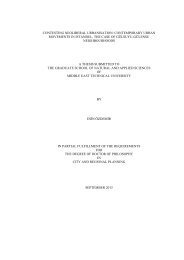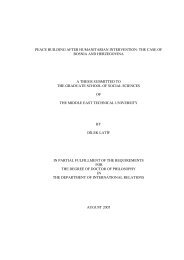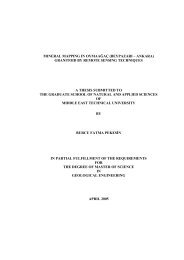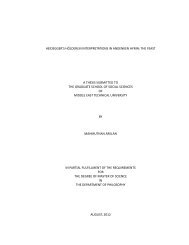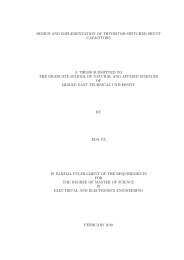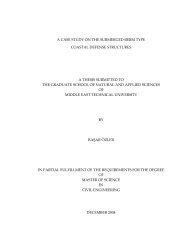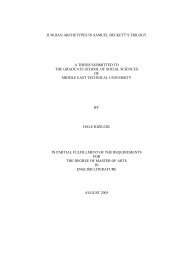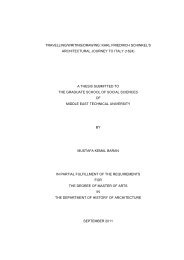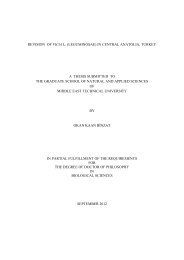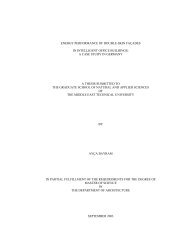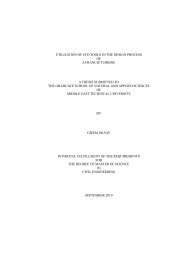View Original - Middle East Technical University
View Original - Middle East Technical University
View Original - Middle East Technical University
You also want an ePaper? Increase the reach of your titles
YUMPU automatically turns print PDFs into web optimized ePapers that Google loves.
analysis which further polemicise the cotroversy around the terms of general<br />
equilibrium as an explanandum of economic theory. For Friedman, Marshallian<br />
partial equilibrium is indeed a special form of general equilibrium; for Stigler,<br />
‘general equilibrium is a misnomer’ in that this method of analysis can at best be more<br />
inclusive as to the data under study so that all general equilibrium analyses are a part<br />
of Marshallian theory so long as certain data cannot be trivial but only outside the<br />
ultimate theoretical quaesitum; and, for Dardi, partial equilibrium is about the overall<br />
yet changing level of equilibrium in the economy as opposed to the equilibrium in<br />
parts of the economy(De Vroey 2007:19-20). These pro-Marshallian disclaimers had<br />
not however undersold efforts for a thoroughly Marshallian General Equilibrium<br />
theory. In fact, this has been more than a velleity for certian entrepreneurs in<br />
economic thinking because Walrasian General Equilibrium theory has a definitive and<br />
decidedly holistic methodology of which Marshall’s industry-level analysis is scarcely<br />
a counterpart. De Vroey even contrasts complex general equilibrium models(Arrow-<br />
Debrue model a la Walras and Hart’s model a la Marshall) with simplified general<br />
equilibrium models(real macroeconomics as Hicks’ IS-LM paradigm a la Marshall<br />
and real business cycle models a la Walras) on top of an earlier two-fold category of<br />
general equilibrium theories as Marshallian(imperfect/perfect competiton) and<br />
Walrasian(perfect competition)(2004:59-60). To that effect, for Leijonhufvud, who<br />
otherwise champions Marshallian methods since Marshall, unlike Walras, had been<br />
privy to the fact that a model is not a theory(that is to say, insofar as a theory is an<br />
explanatory method and a model is a mathematical scheme for that method, then not<br />
all theoretical injunctions would have a practical ersatz in mathematical tables), the<br />
real feat would be the design of a comprehensive and dynamic mathemetical model<br />
for a general equilibrium system which would foremostly be a heuristic for structural<br />
non-equilibrium and market failure in Marshallian/Keynesian terms.<br />
Since the mid-1970s, new neoclassical theory and new Keynesian theory has been the<br />
forerunners in mainstream economics. Boyer considers the miasma around economic<br />
theory as a consequence especially of the abstrusely pollyannaish foray of these two<br />
theories(and even others) toward a broad enough General Equilibrium method of<br />
61



